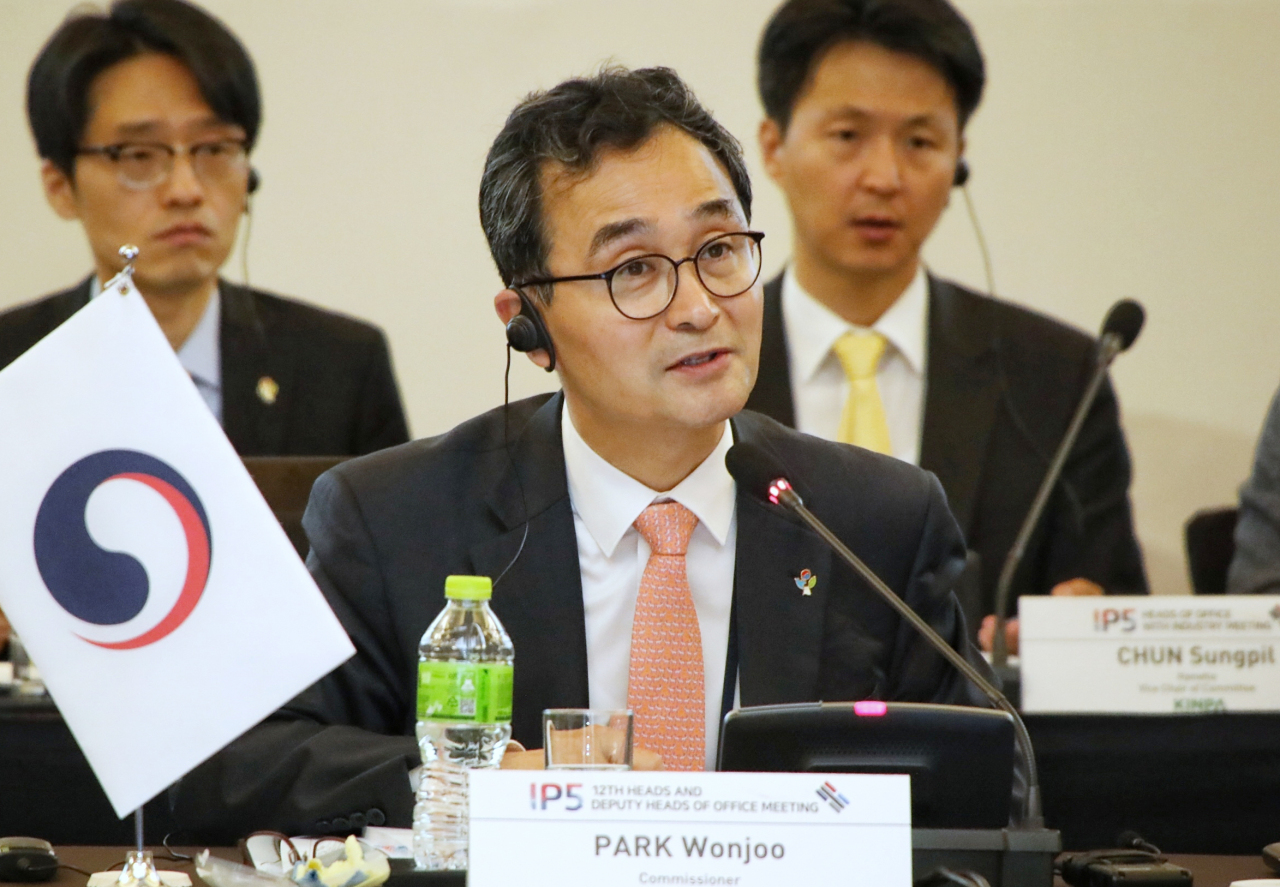For the past 12 years, the world’s top five intellectual property offices -- known collectively as the IP5 offices -- have led global efforts to build a unified, applicant-friendly patent system.
They have also improved the quality of the patent examination process and the efficiency of relevant administrative work by integrating the concepts of work-sharing, data exchange and standardization, say the organizers of the 12th annual IP5 meeting in Incheon, South Korea’s western port city, who are celebrating more than a decade of successful cooperation.
 |
Korean Intellectual Property Office Commissioner Park Won-joo speaks at IP5`s annual meeting held in Songdo, Incheon on Wednesday. (KIPO) |
Intellectual property offices representing the United States, Japan, the European Union, China and Korea first gathered in Hawaii in 2007, laying the cornerstone for what would be a joint effort to improve the global patent ecosystem.
A year later they met on Korea’s southern resort island of Jeju and declared their consultative body’s shared vision of “work simplification,” a move to eliminate time-consuming and duplicative processes that hold back progress.
They also agreed upon 10 foundation projects, including a shared machine translation technology initiated by KIPO and five information-oriented projects initiated by other patent offices, which have served as a framework for IP5 cooperation over the past decade.
At their third meeting, held in China’s southern city of Guilin in 2010, participants focused on identifying the resources they needed for the projects. A system for pursuing the projects was mapped out as well.
At the 2011 meeting in Tokyo, they discussed updates to the Patent Cooperation Treaty, an international patent law treaty concluded in 1970 and effective since 1978, which established a unified procedure for patent applications.
The 2013 meeting in San Francisco marked a turning point for the group, as its members reached a consensus on pursuing the Global Dossier initiative -- an online public service that offers integrated access to patent application documents. The portal, launched in 2014, also allows users to monitor the status of their applications around the clock.
The members adopted their first joint declaration in 2015 in Suzhou, China, then agreed to draw up measures at their next meeting in Tokyo to deal with the slew of changes expected to accompany the “fourth industrial revolution,” such as the impact of artificial intelligence on the patent system. At their 10th meeting in Malta, participants marked a decade of collaboration and unveiled a new vision highlighting the harmonization of administrative work and processes coupled with the expansion of a cooperative examination process.
Last year in New Orleans, the members agreed to a pilot project involving collaborative research on the Patent Cooperation Treaty, which will lead to a joint provisional report on the global patent ecosystem.
By Jung Min-kyung (
mkjung@heraldcorp.com)








